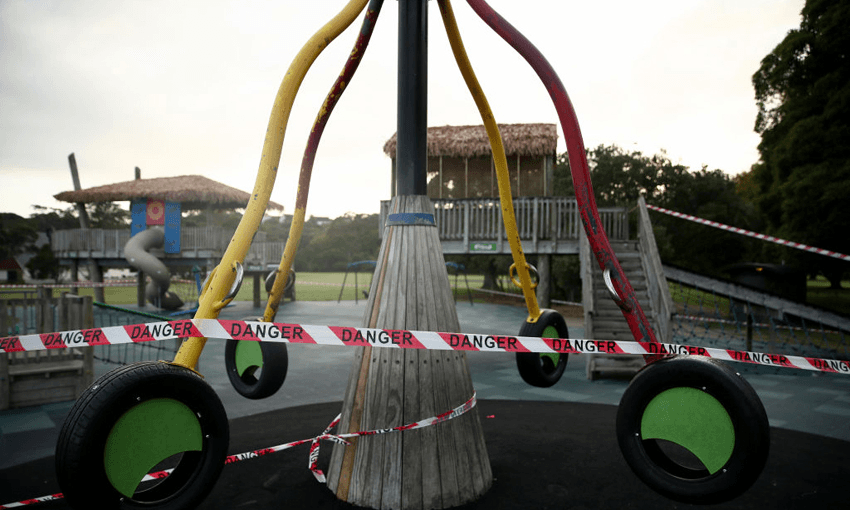In choosing to lead with the threat that Covid-19 poses the High Court makes it abundantly clear that it is going to cut the government a lot of slack when reviewing the overall legality of its actions in response, writes Andrew Geddis.
Probably the most famous opening to a court judgment is to be found in the UK court of Appeal case of Miller v Jackson. Two home owners were seeking to stop the neighbouring cricket club from playing games on the club’s ground, because the ball kept on being hit over their fence and damaging their house.
The moment you begin reading Lord Denning’s judgment, you immediately know which way he was going on this issue: “In summertime village cricket is the delight of everyone. Nearly every village has its own cricket field where the young men play and the old men watch. In the village of Lintz in County Durham they have their own ground, where they have played these last 70 years. They tend it well.”
They tend it well, indeed. Unsurprisingly, Lord Denning went on to find that the cricket club should be able to continue its games despite the harm caused to the homeowners.
Yesterday’s decision on the challenge to the legality of our level four and three lockdown measures might provide New Zealand’s public law equivalent of such a spoiler opening. Here’s how the judges commence their joint decision: “At the time of finalising this judgment, Covid-19 had infected over 21,500,000 people world-wide and killed over 760,000.”
Reading that invokes Hudson’s cry: “Game over, man, game over!” In choosing to lead with the threat that Covid-19 poses the court makes it abundantly clear that it is going to cut the government a lot of slack when reviewing the overall legality of its actions in response.
And so it proceeded to reject the argument of the claimant, Mr Borrowdale, that the overall lockdown measures were not actually permitted by the Health Act 1956. The nature of the legislation, the emergency situation faced by the nation, and the need to apply the law in a novel situation all called for a “fair, liberal, and remedial construction” of that statute’s wording. In other words, the court would go looking for ways to try and fit the government’s actions under that legislation’s umbrella.
Unsurprisingly, it then found them. The powers bestowed on the director general of health, Ashley Bloomfield, by the Health Act were intended to be broad and cover the whole country. They come from a long history of allowing pretty draconian actions to preserve public health. They mean that he can, by way of nebulous “appropriate notification”, tell everyone they have to stay indoors for all but limited exceptions until he thinks it is safe for them not to.
Equally, the way that Ashley Bloomfield went about determining which companies could carry on trading under lockdown was all OK. All he had to do was come up with a general, high level definition as being those businesses “that are essential to the provision of the necessities of life and those businesses that support them”, then hand the matter over to another government agency to decide exactly which businesses met that criteria. That was still him deciding what could be opened and what had to stay closed, as the Health Act required.
And even when the court agreed with Mr Borrowdale on one point – that the legal framework in place for the lockdown’s first nine days didn’t actually forbid all the things people were being told they couldn’t do – it very much down-played the matter. This was largely a legal “no harm, no foul” situation. The government could have issued the right legal orders at the outset of lockdown, it just didn’t get around to doing so for a nine-day period.
So, while the failure to create a clear legal basis for the lockdown rules from the outset meant that people’s legal rights were improperly limited, the government still acted in “a necessary, reasonable and proportionate” way. In making a declaration to that effect, the court didn’t even use the word “unlawful” to describe the situation (even though it was).
I don’t mean this very brief summary of the court’s 293 paragraph long decision to sound cynical or dismissive. The court did its job in holding the actions of the government up to scrutiny and ensuring that they fit within the law. And as I noted before the case was heard, there certainly were very smart legal minds out there who saw matters the same way that the court did.
So it’s not that the court got the decision wrong. Rather, it seems clear that the court’s perception of its job, and the law at issue, was very much coloured by the same collective concerns that drove the government’s response to the virus. Preventing lots of people from dying from a disease is perhaps the government’s highest obligation, and the law has to be seen as enabling the government to carry out that task.
We are, after all, a team of five million – not a team of 4,999,997 and three High court judges.

